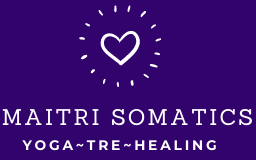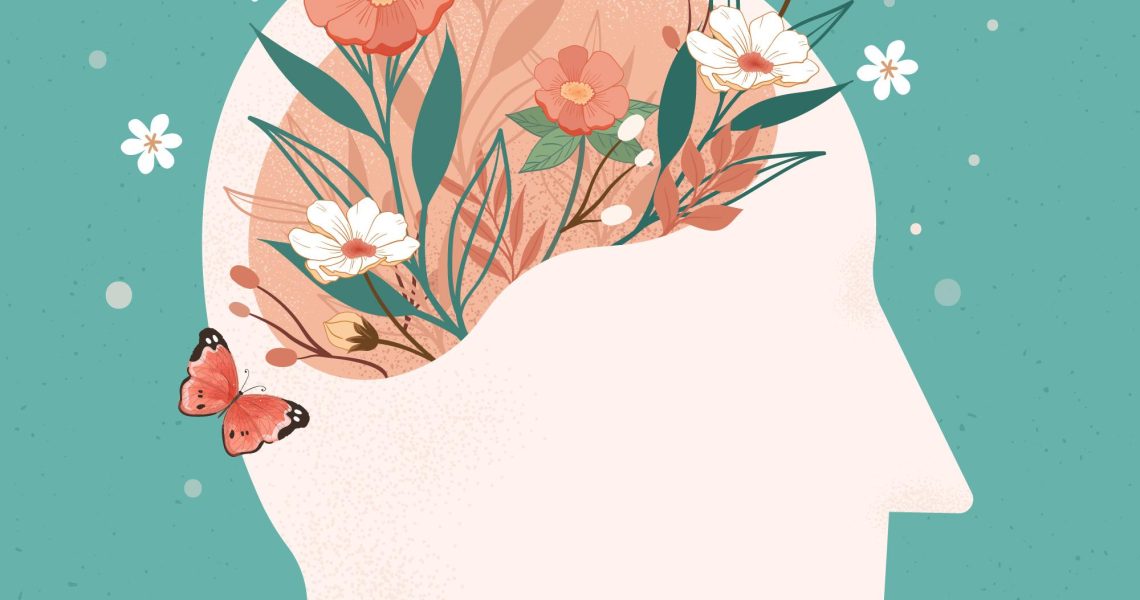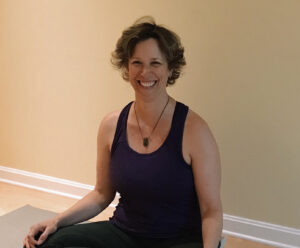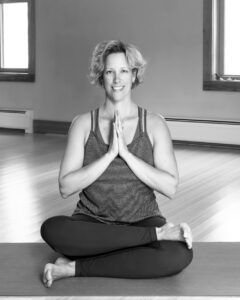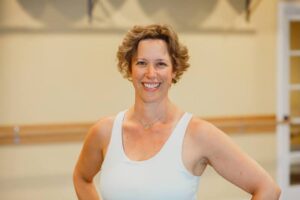[image courtesy of Freepik.com]
I like to define mindfulness as watching yourself with alert interest, holding an intention of kindness and understanding to whatever you come to notice. In this way, you come to know your mind and how it influences your perceptions and actions.
When I first started mindfulness practice, I went all out!
I attended a Mindfulness Based Stress Reduction workshop (MBSR); a Mindful Eating weekend retreat; two six-week series in Buddhist meditation; and I amassed volumes on the topic. My type-A approach to mindfulness left me overwhelmed and even less present! The more I slowed down my efforts, the more gentleness I brought to my practice, the more benefits I began to receive. My relationship with food began to heal. My anxiety became much more manageable. My depressive cycles appeared less often, didn’t last as long, and were less intense. And I experienced fewer and fewer episodes of my chronic pain symptoms.
Tantra yoga teaches us that the Absolute Consciousness chooses to become the many. The Universe becomes the multiverse; you, me, and everything in it. That the vastness of the Sky element condenses to become the solid forms of Earth; of life. In this contracted form, a forgetting occurs.
When the vastness of one’s Spirit is smushed into their body, well, so many distractions keep us from remembering who we really are!
What can I watch? taste? touch? what hurts? what changes? change…oh no)! Yoga is a path for remembering. In the ethical practices of yoga (from Patanjali’s Yoga Sutras) we understand the practice of svadhyaya. Sva means self, and adhyaya means lesson, lecture, or reading. Along with reading the ancient texts, this also points to the practice of Self study. Of coming to know yourSelf. Without mindfulness, samskaras in yoga (self limiting habits, patterns, and beliefs) color your experience, skewing your perceptions. You see your life through the distorted lens of your history and act accordingly. In this scenario, we are not consciously choosing, but operating from our habits.
We recognize the challenge and that effort and discipline are required to work with the habitual unawareness and automatic nature of the mind that is tenacious!
So we invite a curious, open mind. Kindness without judgement. A “YES” to what is. In this way you are empowered! You experience more agency, creativity and satisfaction in your life. Wisdom and intelligence grows. Mindfulness brings you into the present moment, the only place where life happens. And the more time you spend there, the more peace and ease you can experience. You can cultivate trust and generosity. And healing happens only in present time! If we are lost in the past or projecting to the future, we are not here now, and healing slows.
Mindfulness reduces depression, strengthening your medial prefrontal cortex, responsible for decision making, discernment, and moderating social behavior (your ability to be responsive rather than reactive).
And my favorite benefit of mindfulness is interoception.
I define interoception as awareness and acceptance of sensation in your body. High levels of interoception are associated with a greater sense of well being; increased emotional regulation (responsive v. reactive…that social behavior piece); and can reduce your experience of pain!
When you engage with yourself and practice mindfulness, you remember who you really are. Your Absolute Self; the Universal in you that is not bound by space or time; nor contained only in your physical form, but that is Consciousness, Divine intelligence, and your recognition of this in your heart and in all hearts, is the highest purpose of the practice of yoga.
Practice ideas:
Maybe you’ve tried mindfulness without success. Or “navel gazing” just isn’t for you. Or there is so much going on in your body mind it feels impossible. Often we are just confused about what’s being asked for, and many times it is not offered in an accessible way. We are asked to sit still and pay attention to our insides for twenty, thirty, sixty minutes during what might be our very first time. We “hear” that we are supposed stop thinking (good luck trying to make that happen). We are told to sit on the floor and not move. I tossed in the towel many times (can’t you tell from my story)? Like anything new, it takes practice. Getting back up on the horse. For starters, let’s take some pony rides, because guess what? You can gain benefits from just three (3) mindful minutes a day!!! Try one or more of these on…
- Next time you are washing the dishes or taking a shower, or washing your hands…each time you remember, turn your attention to the temperature of the water, the smell of the soap, the sensations of the water, suds, shapes.
- Each day before a meal or snack notice 3-6 breaths. Follow the rhythm. Notice the volume. Is there a temperature? Where do you notice the breath moving in your body?
- When you wake in the morning, scan your body for 3 or 4 sensations: warm, heavy, antsy, smooth, buzzy, knotted, hollow, dull, settling, tingling, cool, etc. Notice where they are in your body. If it’s a pleasant or comfortable sensation, try staying with it for 1-5 breaths.
- Try brushing your teeth as if for the first time (extra challenge, use your non dominant hand!). Notice the smell and taste of the toothpaste; the texture of the bristles; the sounds and sensations. Notice how your teeth, gums, and tongue experience being brushed. What is happening with your non dominant hand? What stories is your mind generating? Return attention to the felt sense of brushing your teeth.
Yup, mindfulness can be that simple (not necessarily easy)! Each time you notice your mind pulled away by thinking, practice choosing to not follow the story line or believe the thought, but invite kindness to a mind that generates thoughts as minds do, and gently return your attention back to the present moment anchored in sensation in your body. You many repeat this dozens of times in a few minutes of practice. No problem. This is mindfulness. I’d love to hear how it goes for you!
Remember: this post is for informational purposes only and may not be the best fit for you and your personal situation. It shall not be construed as medical advice. The information and education provided here is not intended or implied to supplement or replace professional medical treatment, advice, and/or diagnosis. Always check with your own physician or health care professional before trying or implementing any information read here.

